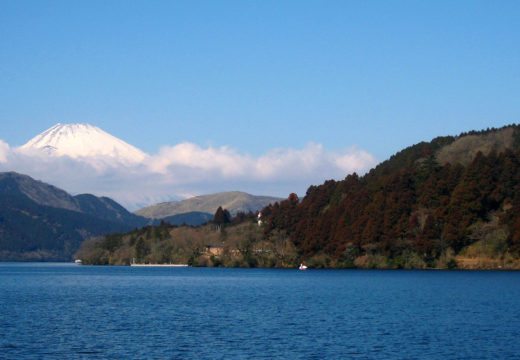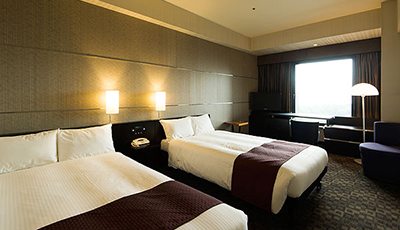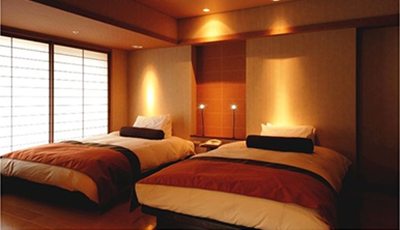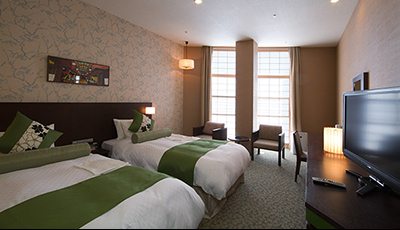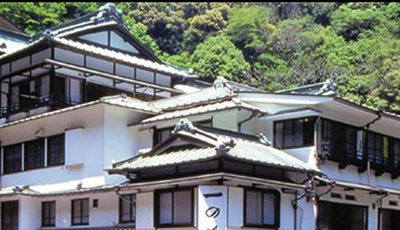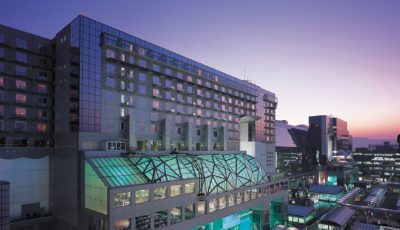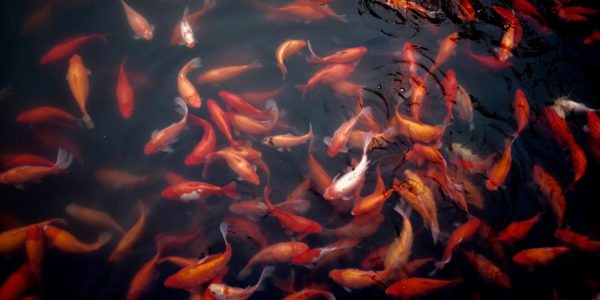Private/Group Tour Highlights
- Experience Japanese culture hands-on
- A multi course dinner at a famous restaurant, the inspiration for Tarantino's Kill Bill movie
- Enjoy a day tour of the fascinating city of Tokyo with a local guide
- Visit Meiji Shrine, a popular place for traditional Japanese weddings
- Walk Omotesando street, a tree lined avenue home to the world's top fashion brands
- Asakusa, Tokyo's old town where one can soak in the atmosphere
- The world's largest fish market, Tsukiji Market
- A majestic replica pirate ship ride across the volcanic Lake Ashi
- Ride Japan's world famous Shinkansen bullet train to Kyoto
- Enjoy learning traditional arts with the support from a professional instructor
- See the world's largest wooden building, home to Japan's largest Buddha
- Wander through Nara Park, and make friends with some of the free-roaming deer
Tour Overview
The Golden Route of Japan is one of the most captivating trips to enjoy this historic nation. Overflowing in modern advances and incredibly preserved historic relics, Japan is a destination that will enthrall all who wish to visit. Begin this journey by starting in the futuristic capital of Japan, Tokyo. Allow your senses to explore while the neon lights flash along the famous Shibuya Crossing. Purchase some of the freshest ingredients for the iconic Japanese dish, Sushi, while walking along the world’s largest fish market, Tsukiji. Travel by train to Hakone, the gateway to the Mt Fuji Region to witness some of the most stunning views of the famous mountain. While in Hakone, feel relaxation consume you with a soak in some of the local hot springs to ease the tension of the bustling city prior. Before Embarking on a trip to Kyoto, learn of the area’s culture with a visit to a local family who is kind enough to invite Yampu Travelers in to participate in a traditional tea ceremony, flower arrangement, calligraphy or origami. One can also take up a cooking class, using some of the finest ingredients of the Kansai Region.
Once in Kyoto, learn about the area’s rich history while visiting opulent castles and temples, then take to the city of Nara to explore the once “permanent” capital of Japan. Take in the scenery of these historic grounds while making friends with some of the local free-roaming sika deer. Local Mythology says that a deity arrived at the old capital of Japan on a white deer to act as its protector, leading to the creatures now being considered national treasures. After a trip like The Golden Route of Japan, one will return home with the greatest understanding of the country and its endearment towards its history as well as its proficient achievements.
Inclusions
Exclusions
International airfare (unless specifically included), airport departure taxes that must be paid on-site, gratuities, meals not mentioned, soft drinks and alcoholic beverages with meals, early / late check-out, room service, visa fees/services and other personal items or services not mentioned
Package Price: From £$ 7319
Prices shown above are per person. Hotel categories do not adhere strictly to international ratings; Yampu has evaluated the hotels according to destination and availability. Prices include local airfare (where applicable), hotel accommodation including daily breakfast; all transfers with baggage handling, all guided tours in English and all entrance fees.
Please note that prices are subject to change based on availability and seasonality, especially during the holiday season from December 20th through January 5th each year. Please contact a Yampu Travel Specialist for more information on best times to travel.
Trip Type:
All our trips are operated on a private basis unless specified otherwise. This is only a sample itinerary; your Yampu Tour Consultant will personalize this trip for you according to your available dates, interests and type of hotels. This is your trip and we will work on making it perfect!
Tour Itinerary
Arrive in Tokyo!
On read more...
On arrival at Narita Airport, be met in the arrival hall by the driver who will assist with the included transfer to the hotel (60- 90 minutes). The remainder of the day will be at leisure. In the evening enjoy an optional multi course dinner at the famous izakaya-style restaurant Gonpachi, whose amazing interior was the inspiration for the set of Tarantino's Kill Bill movie starring Uma Thurman. Tarantino had dinner at the restaurant and was so taken by the interesting architecture that he decided to make this the backdrop for the scene Showdown at The House of the Blue Leaves in Kill Bill. Gonpachi serves tasty home-style Japanese food. ...read less
Tokyo Day Tour
Take read more...
Take a day tour of this fascinating city with a local guide, making use of Tokyo's comprehensive and user friendly public transport system. The day begins with a visit to Meiji Shrine, a shrine dedicated to the deified spirit of Emperor Meiji and a popular place for traditional Japanese weddings. Take a walk down Omotesando shopping street, a broad tree lined avenue home to the flagship stores of the world's top fashion brands. Head across town to Asakusa, Tokyo's old town where one can soak in the atmosphere of the Old Tokyo. Visit Sensoji, Tokyos oldest temple and wander down Nakamise, a shopping street that has been providing temple visitors with a variety of traditional, local snacks and tourist souvenirs for centuries. Take a boat cruise on the Sumida River passing under 12 bridges. Disembark in Hamarikyu garden, an Edo Period Japanese garden surrounded by the Shiodome district's futuristic skyscrapers, a great example of how Japan is the land of contrasts, where one will stop for a cup of steaming matcha and Japanese sweets in a tea house on a small island in the park's lake. ...read less
Tsukiji Fish Market Walk and Sushi Making
The read more...
The world's largest fish market, Tsukiji Market handles about 2,888 tons of marine products a day worth about 2.8 billion yen (US$20million). Some 450 kinds of fish are received; from penny-per-piece sardines to golden brown dried sea slug caviar, a bargain at US$473 a pound. Some of the giant tuna go for well over 1,000,000JPY each (US$8000). Take time to wander through this enormous market, exploring both the vegetable and fruit areas plus the impressive seafood section. There may also be an opportunity to see a complete tuna being cut and filleted. Next up, visit a typical Japanese home. The guide will answer all questions about Japanese culture and everyday life in Tokyo during the transfer by public transportation. Learn to prepare maki sushi (rolled sushi), gunkan maki (sushi rice wrapped with a strip of seaweed and topped with soft ingredients), and nigiri sushi (sushi rice topped with a slice of raw fish). Enjoy this home made sushi for lunch.
In the afternoon, explore Tokyos shitamachi (downtown). The suburb of Yanaka was miraculously spared the carnage of the Allied bombings in World War II, and part of its charm today of its best spots lies in this sense of being hidden. Visit old temples and shrines, one of Tokyo's oldest Buddhist cemeteries as well as traditional shops selling Japanese paper and sweets. One of the most popular parks for hanami (cherry blossom parties) in Tokyo, Ueno Park was originally part of Kaneiji Temple, which used to be one of the city's largest and wealthiest temples and a family temple of the ruling Tokugawa clan during the Edo Period. Now it is home to some of Tokyo's best museums, including the Tokyo National Museum and the Metropolitan Museum of Art. Last stop for the day is Ueno's Ameyoko-cho, a busy market street underneath the train lines. Originally the site of a black market after World War Two, this bustling market is the last of its kind in Tokyo, and is filled with shops and stalls selling various products such as fresh fish, dried food and spices. At one of the many open air restaurants under the train tracks, stop for a cold drink and a yaitori (grilled chicken skewer).
...read less
Hakone and Mt Fuji National Park
Travel read more...
Travel by train to Hakone, the gateway to the Mt Fuji region. Armed with a Hakone Pass, take advantage of the extensive local transport network to explore this stunning region. A majestic replica pirate ship will sweep across the volcanic Lake Ashi, so deep that it never freezes over in the winter. One can also ride switchback trains, ropeways and buses to get around to explore some of the museums, shrines, and shops scattered around the area. Tonight, stay in a Japanese traditional ryokan, sleeping on futons laid out on tatami mats with delicious included meals and piping hot onsen (hot spring) baths. ...read less
Cultural Experience or Japanese Cooking Class
Today, read more...
Today, ride Japan's world famous Shinkansen bullet train to Kyoto. Capable of speeds of up to 185mph (360km/h), the Shinkansen takes 2 hours to reach Kyoto. This afternoon take the opportunity to experience Japanese culture hands-on.
Choose between one of the following two activities: Home Visit with Cultural Experience, Visit the home of an instructor of one of Japan's Traditional Arts. One of our assistants will meet at the hotel and escort Yampu Travelers to the instructor's house. One may choose from Tea Ceremony, Flower Arrangement, Calligraphy or Origami. Enjoy learning these hands-on traditional arts with the support/advice from the professional instructor and interpretation from the guide.
Or
Japanese Cooking in Machiya Townhouse Japanese cuisine has such high reputation that it was declared UNESCO Intangible World Heritage. In this tour, enjoy making some of the dishes that made this cuisine so popular in the world and in particular learn about Kyoto's typical kappo cuisine. In Japanese, "kappo" means to cut ingredients with a knife and cook them over a fire. At a kappo style restaurant, fine seasonal cuisine is served over a counter where diners sit face to face with a chef. In this class, be the chef! (Make your own way to the venue)
...read less
Explore the Former Imperial Capital; Kyoto
Today, read more...
Today, explore the former imperial capital with a knowledgeable local guide, utilizing Kyoto's comprehensive bus system to visit some of Kyoto's World Heritage Sites. Start the day with a visit to Kinkakuji Temple (Golden Pavilion), which was originally built as a retirement villa for the Shogun. After his death it became a Buddhist Temple at his request, and is now one of Kyoto's most famous temples. Nijo Castle is an ornamental castle, built by the founder of the Edo Shogunate as his Kyoto residence and is surrounded by stunning surrounding gardens. The main building was completed in 1603, and is famous for its architecture, decorated sliding doors and 'chirping' nightingale floors.
Take a walk down Nishiki Market, a narrow, five block long shopping street lined by more than one hundred shops and restaurants. Known as Kyoto's Kitchen, this lively retail market specializes in all things food related, like fresh seafood, produce, knives and cookware, and is a great place to find seasonal foods and Kyoto specialties, such as Japanese sweets, pickles, dried seafood and sushi. Final stop today is Kiyomizu (Pure Water) Temple. From the 13m high veranda jutting out from the Main Hall one can enjoy amazing views of all of Kyoto, whilst pondering the fact that both the Main Hall and Veranda were built without the use of nails or any kind of joiners.
Optional Lunch; Stop for a multi course lunch at the characteristic Japanese restaurant Itoh Dining, where one can enjoy the famous Kobe beef and other traditional examples of Japanese cuisine. Inclusive of set course lunch and 1 glass per person of beer or wine.
...read less
Nara and Fushimi Day Tour
Transfer read more...
Transfer from the hotel to Nara by train (45min) with a local guide. For 74 years during the 8th century Nara was Japan's capital and many of the temples and shrines built at that time still remain. Visit Todaiji temple, the world's largest wooden building and home to Japan's largest Buddha. Next stop is Nara's most celebrated shrine, Kasuga Taisha, established in 768 AD and famous for its hundreds of bronze and stone lanterns which have been donated by worshipers. Wander through Nara Park, called Deer park by locals due to the large population of more than 1,000 tame deer living there. On the way back from Nara, visit Fushimi Inari Shrine, which was used in the movie Memoirs of a Geisha. It is home to over 10,000 red tori gates, which form a path up the mountain behind the temple. ...read less
Day at Leisure in Kyoto or Transfer to Tokyo
Today, according to one's flight, travelers either have a free day in Kyoto or may choose to make the return trip to Tokyo (2.5 hours) at any time. So one can either spend the day sightseeing in Kyoto, or head back early to see more of Tokyo.
Today, according to one's flight, travelers either have a free day in Kyoto or may choose to make the return trip to Tokyo (2.5 hours) at any time. So one can either spend the day sightseeing in Kyoto, or head back early to see more of Tokyo.
Transfer to the Airport for Flight Home
The day is free until the transfer to Narita, Haneda or Kansai Airport (60-90 minutes).
The day is free until the transfer to Narita, Haneda or Kansai Airport (60-90 minutes).
Places You'll See
-
Tokyo
One of the World’s most cutting-edge capitals, Tokyo is a city of contrasts. Famous for its cutting edge modernity, neon-lit landscape and towering skyscrapers, it is also home to sprawling parkland, peaceful shrines and temples and lovingly tended gardens. Despite its love affair with manga pop culture, fashion, high-tech trends and conspicuous consumption, below the surface is a city that has its roots in an ancient heritage. Shinto shrines and Buddhist temples stand close to skyscrapers as a reminder of a more contemplative time.
-
Kyoto
Kyoto is the nation’s former capital, the residence of the emperor from 794 until 1868, and is Japan’s seventh largest metropolis. With 2,000 religious buildings as well as palaces, gardens and associated architecture, it is one of the best preserved cities in Japan and has been awarded UNESCO World Heritage status. Kyoto represents the “Japan of old” and beyond the high rise skyscrapers built as a monument to progress, the real monument to Japan’s historical and cultural past can be found in the city’s narrow alleyways where tea houses abound and kimono-clad geisha hurry from elegant function to function.
-
Hakone
Part of Fuji Hakone Izu National Park, Hakone is a prime holiday destination with a splendid view of the famous Mount Fuji, along with many other natural wonders, including 17 delightful hot springs. Walk around the open air museums, or relax and bath in the gorgeous springs and spas offered throughout the area. Explore the stunning area aboard a majestic replica pirate ship, sweeping across the volcanic Lake Ashi.
-
Nara
Once the capital of Japan, dating back to 710, Nara is now a historic and cultural hub filled with ancient treasures for travelers to learn more about this country’s dramatic and rich history. Testaments to Nara’s ancient status consist of many of Japan’s oldest temples and pagodas. Visit the worlds oldest wooden buildings and Nara’s most celebrated Shinto shrine, all before making friends with the wild sacred deer that roam the area freely.



